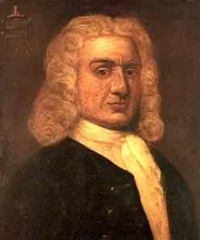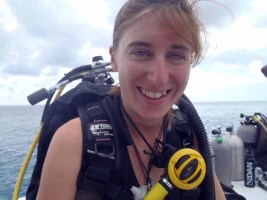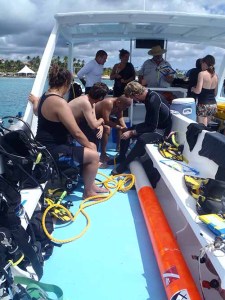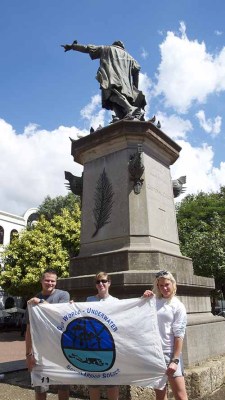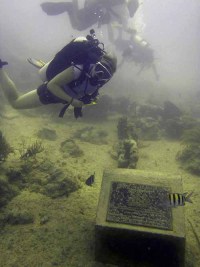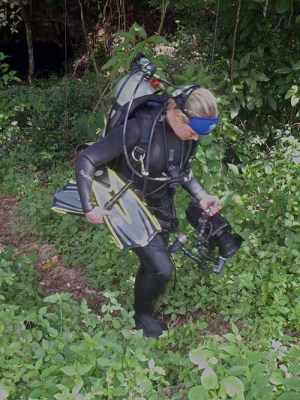Three years ago a team of underwater archaeologists from Indiana University, led by Dr Charles Beeker, made a remarkable discovery in the shallow Caribbean waters of the Dominican Republic. The discovery: Captain Kidd’sQuedagh Merchant.
In 1968 while Captain Kidd was in command of the Blessed William, he came across the Quedagh Merchant –an Armenian merchant ship carrying a lavish supply of precious metals, materials and food-stuffs. Kidd seized this lucrative ship believing it would be ample compensation for his late return from a mission to rid the Indian Ocean of pirates. By 1699 and while in the Caribbean – thousands of miles from where the ship was captured along the West Indian coastline, news reached Kidd and his crew that a Royal Warrant was out for their arrests for acts of piracy. Kidd headed to New York in a small sloop – the majority of his valuable loot onboard – confident he could clear his name. The crew Kidd left safeguarding the Quedagh Merchant ended up scuttling the ship, setting it ablaze and casting it adrift. Perhaps they were wary of their new tags as pirates and wanted to rid themselves of any evidence? Funnily enough, in true pirate style, they removed all the remaining valuables before letting the ship go.
308 years later and a matter of meters from the jagged shore of Catalina Island Dr Beeker and his team found the abandoned Quedagh Merchant. Today the site is declared as a Living Museum of the Sea. Divers and snorkelers alike can glance back into history as 17th century artifacts including canons and anchors are to be found scattered amongst the great colonies of Elkhorn coral and the lively fish of the otherwise typical Caribbean reef.
Dr Beeker and his team have worked tirelessly to turn this site, and other archaeologically significant sites found along this stunning coastline, into Living Museums of the Sea. Dr Beeker was keen to have all three scholars on board with his Living Museums project and needless to say Anthea, Christian nor myself needed much persuasion to head to the Dominican Republic! Over five days we worked with Dr Beeker and a super team of volunteers from the United States Peace Corps. The support of the Peace Corp team is admirable and crucial. With their local knowledge and links to the communities they have the know-how to make this project work at the local level, which is an extremely important aspect in any project such as this. With this great team for company, our days were spent making and securing new marker buoys; making general site assessments; and completing a biodiversity study at one specific site.
As my time on this idyllic island progressed and I spent more time underwater at the Living Museum sites I became ever more impressed by the work being done here. The main intention of the Living Museums of the Sea Project is to preserve and protect these precious sites. Making these sites no-take and no anchor zones means these remarkable insights into history are protected, and the biodiversity of these sites is given a chance to thrive. What is more, the sites act as valuable tools for eco-tourism. While diving the Quedagh Merchant site to research the recruitment of species on the canons, we surfaced to find a “pirate ship” laden with tourists that were on a day trip to the site. Stories of swashbuckling pirates are always a good tourist draw and this is undoubtedly a great opportunity to unite the exciting history of pirate adventures with the need to preserve both the artifacts and the reef. The key to conservation is often education and it is wonderful to see Dr Beeker pursuing this route via the Living Museums of the Sea Project.
Indeed our biodiversity study was intended to act as an educational tool for future visitors. We chose to focus our efforts on a specific anchor located at a site artificially created using canons and anchors from Dominican wrecks. We noted the location and size of the different recruits on the anchor, which included star corals, brain corals, sponges, anemones and tube-worms. By creating a template of the anchor and its recruits it can now be monitored for new species, lost species, species growth, disease and other scientifically relevant indicators. In addition, divers can learn to identify these species and transfer this knowledge to other sites during monitoring studies.
It was promising to see such a diverse array of recruits on the anchor and the size of some of the hard corals would suggest they are thriving on this artificial reef. In addition, the canons at all the Living Museum sites had a healthy collection of recruitment species and small reef fish were constantly darting around. The interpretive plaques Dr Beeker’s team installed at the sites were being used as nurseries by Sergeant Major fish. The Sergeant Majors were very defensive of their sprawling purple broods: they certainly didn’t hold back when charging at our masks! As we spent more dives investigating these sites it was evident that Dr Beeker’s plan to protect both the treasurable history, and the equally as treasurable ecosystem, is working.
Once our work securing mooring buoys and studying reefs was completed we were fortunate enough to have time remaining to dive Padre Nuestro – a cavern on the outskirts of Bayhibe town. Dr Beeker was eager to show both the Peace Corps team and us scholars Padre Nuestro as a few years previously his team discovered faunal remains dating back thousands of years within the cavern. During the dive briefing Dr Beeker explained how he would show us some of the remaining bones, but once in the cavern I found myself spellbound by its majesty and I went off in a little Erin dive trance. I never saw any bones, but I can tell you that stalactites and stalagmites project from the ceiling and floor, and when these magnificent features are combined with the whiteness of the limestone and the scattering blue hues of the light, the cavern makes for a magical setting. The draw of cave diving is becoming ever more prominent in my mind.
My five days in the Dominican Republic made for an unforgettable experience, despite rum featuring significantly. Dr Beeker was an extremely generous and enthusiastic host. I rarely meet someone who works as tirelessly and devotedly on a project. It is great to see the project is flourishing thanks to both Dr Beeker’s drive and the strong support he receives from the Peace Corps, university students, academics and local Dominicans. I have no doubt the Living Museums of the Sea Project will continue to expand and become a valuable resource for the Dominican Republic.

